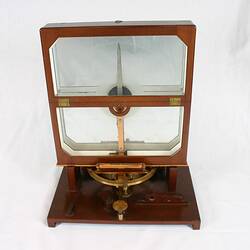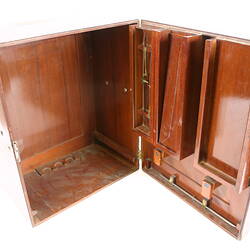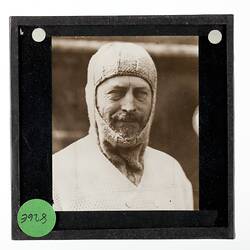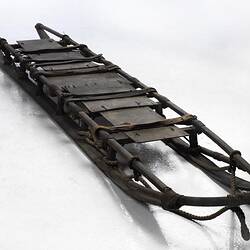Summary
Dip Circle in wooden case manufactured by Moritz Meyerstein. A Dip Circle is a geophysical instrument used to determine the inclination of the Earth's magnetic field to the horizontal at a given location.
This instrument is believed to have been used by Douglas Mawson on the Australasian Antarctic Expedition, 1911-1914. It is part of Museum Victoria's collection of artefacts from the 'Heroic Era' exploration of Antarctica.
Physical Description
Housed in a french polished wooden case, the Dip Circle is made mainly of brass, wood and glass. Dip needle reading is taken from protractor engraved onto mirror backing of circle. Vernier azimuth scale. Brass tripod with adjustments and spirit level. Agate knife edge fulcrum with suspension control. Several attachments are missing, as indicated by vacant holders in back of door of case. Spare needles, key for adjusting knife edge clamp.
Significance
This is a significant object from the first Australian-based expedition to Antarctica that represents the scientific focus of this expedition and in particular Douglas Mawson's geological research.
More Information
-
Collection Names
-
Collecting Areas
-
Acquisition Information
Donation from Melbourne High School, 10 Sep 1984
-
Manufacturer
-
User
-
Place & Date Used
-
Inscriptions
Marked "M. Meyerstein, Gottingen".
-
Classification
-
Category
-
Discipline
-
Type of item
-
Overall Dimensions
25.5 cm (Length), 35.5 cm (Width), 44 cm (Height)
-
Keywords
Antarctic Exploration, Dip Circles, Geophysical Apparatus & Instruments, Making History - Antarctic








